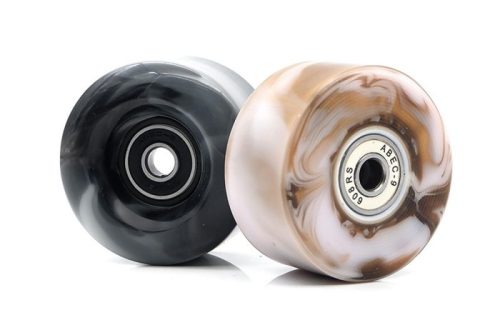Part 1: Developmental Milestones and Toy Exploration
Watching babies grow and reach developmental milestones is an exciting journey for parents and caregivers. One of these milestones is when babies start to hold and interact with toys. Understanding when this milestone typically occurs can provide valuable insights into a baby’s development and guide caregivers in creating a supportive environment for their little ones.

Point 1: Reaching and Grasping
At around three to four months old, babies start to acquire the skill of reaching out and grasping objects, including toys. This milestone is crucial as it marks the early development of intentional hand-eye coordination, an essential aspect of their physical and cognitive growth. During this period, babies tend to employ a whole hand grasp when holding toys, utilizing their palm and fingers to grip onto the object firmly. This method of grasping is a natural first step in their fine motor skill development, enabling them to explore and interact with their surroundings. As babies continue to develop, they will gradually refine their grasp, transitioning to more sophisticated techniques such as the pincer grasp. Through this progression, they gain better control over their hand movements and enhance their ability to manipulate objects, setting the stage for further exploration and play.
Point 2: Fine Motor Skills Development
As babies continue to grow and develop, their fine motor skills progress, allowing for more refined control and manipulation of objects. Around six to nine months, babies start to develop a pincer grasp, using their thumb and forefinger to pick up and hold smaller objects or toys. This ability opens up a whole new world of exploration as babies can now hold and manipulate toys with more precision and control.
Part 2: Factors Affecting the Timing
While there are general timelines for when babies start to hold toys, it’s important to remember that every child develops at their own pace. Several factors can influence the timing of this milestone.

Point 1: Individual Differences
Every baby follows their own distinctive developmental path, influenced by a blend of genetic factors and individual traits. They may vary in the timing of reaching for and holding toys, with some babies naturally demonstrating these abilities earlier than others. It is crucial for caregivers to maintain patience and a supportive attitude, recognizing that each baby progresses at their own pace. Instead of comparing them to others, it is important to create an environment that fosters exploration and play, offering ample opportunities for babies to develop their skills. By providing a safe and stimulating space filled with age-appropriate toys, caregivers can encourage babies to reach their milestones in their own time. Celebrating each baby’s individual progress and offering support and guidance throughout their developmental journey is key to fostering their growth and ensuring their overall well-being.
Point 2: Environmental Stimulation
Providing a stimulating environment can also impact a baby’s development and the timing of their milestones. Offering a variety of toys in different shapes, textures, and sizes can encourage babies to explore and practice their holding abilities. Providing ample floor time and supervised play opportunities can also support the development of reaching and grasping skills.
Part 3: Encouraging Toy Exploration
As caregivers, there are ways to encourage and support babies as they explore and hold toys, promoting their development and engagement in play.

Point 1: Choosing Appropriate Toys
When choosing toys for babies, it is important to prioritize safety and age-appropriateness while also considering their stimulating qualities. Opting for toys with various textures, colors, and shapes can captivate a baby’s attention and provide them with a range of sensory experiences. These sensory-rich toys engage their senses and encourage exploration.
Additionally, selecting toys that are easy to grasp, lightweight, and offer different manipulation opportunities can support the development of a baby’s hand-eye coordination and fine motor skills. Toys with handles, knobs, or textured surfaces can help babies practice their grasping and holding abilities. Lightweight toys are easier for babies to manipulate and control as they refine their motor skills.
Furthermore, offering toys that provide different manipulation opportunities, such as stacking, nesting, or fitting shapes together, can further enhance a baby’s coordination and fine motor skills development. These types of toys allow babies to practice their hand movements, improve their dexterity, and develop problem-solving abilities.
By carefully selecting toys that are safe, age-appropriate, and stimulating, caregivers can effectively support a baby’s exploration, grasp, and fine motor skill development, providing them with enriching play experiences that contribute to their overall growth and development.

Point 2: Offering Supportive Interactions
Engaging in interactive play with babies can further encourage their exploration and holding of toys. Caregivers can model grasping and manipulating toys, demonstrating how to hold and explore them. Talking to babies and describing the toys they are interacting with can enhance their language development and cognitive abilities. Providing gentle support and encouragement while allowing babies to explore independently can help build their confidence and autonomy.
Part 4: Celebrating Milestones and Individual Progress
Every baby is unique, and milestones are achieved at different times. It’s important to celebrate each baby’s individual progress and avoid comparing them to others. Instead, focus on creating a nurturing and stimulating environment that supports their development and encourages play.
Point 1: Enjoying the Journey
Watching babies reach for and hold toys is an exciting moment that signifies their growth and development. Embrace the joy and wonder of each milestone, understanding that babies develop skills at their own pace. Cherish the special moments of exploration and play, fostering a positive and supportive environment that encourages further growth and development.

Point 2: Seek Professional Guidance if Concerned
While developmental milestones vary, it’s essential to consult with healthcare professionals if there are concerns regarding a baby’s development. Healthcare providers can offer guidance, reassurance, and interventions if necessary, ensuring that babies receive the support they need on their developmental journey.
In conclusion, the milestone of babies holding toys represents a significant step in their physical and cognitive development. Understanding when this milestone typically occurs, while considering individual differences, can provide insights into a baby’s growth. Encouraging toy exploration, providing appropriate toys, and offering supportive interactions can enhance a baby’s engagement in play and development. Celebrating each milestone and embracing the uniqueness of every child’s journey is essential. As caregivers, creating a nurturing and stimulating environment and seeking professional guidance when needed can support babies in reaching their developmental milestones and thriving on their developmental journey.


